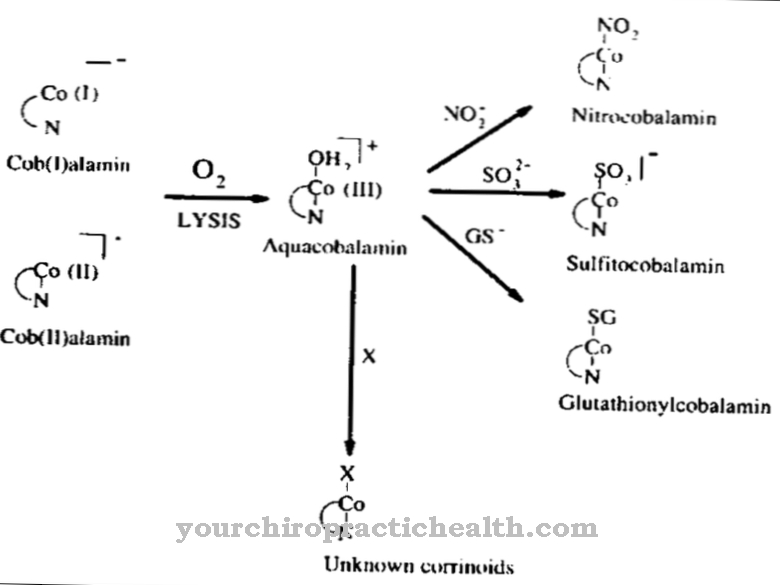Melatonin is a hormone that the human body produces depending on the light conditions of the surrounding environment. It acts as a messenger substance in a complex circuit in the brain that regulates the sleep-wake cycle throughout the day. Fluctuations in the release of melatonin are the result of external influences or changed metabolic processes and can have a decisive influence on the quality of sleep.
What is Melatonin?

Chronobiology deals with the investigation of functions that organize living organisms along the circadian (around the day) rhythm of recurring daily routines. Living beings control processes that conform to circadian rhythms via specific metabolic processes.
These metabolic processes are themselves subject to very different influences.External environmental conditions, lifestyle habits, age, and the individual functioning of an organism are factors that affect the regulation of time-controlled biological processes. For humans, the sleep-wake rhythm is one of the most important circadian cycles. It depends on the production of melatonin in the body.
Melatonin is a hormone that the organism can synthesize itself. It acts as a neurotransmitter. Neurotransmitters are biochemical messenger substances that are responsible for the transmission of stimuli between nerve cells and other cells. The alternation of light and dark is the decisive external timer for the production of melatonin.
Production, Education & Manufacturing
The most important place of production of the hormone melatonin in the human body is the pineal gland (or epiphysis). It belongs to the structures of the epithalamus, which is itself part of the diencephalon. Only melatonin in the epiphysis promotes sleep, but the intestines and retina of the eye can also synthesize the hormone.
The production of melatonin is the result of functions in an intricate circuit. The pineal gland is connected to the hypothalamus, which is also part of the diencephalon. Light-dark stimuli that are picked up by the retina are passed on to the hypothalamus and from there reach the pineal gland. Under the influence of light, the pineal gland inhibits the synthesis of melatonin from the raw material serotonin.
Production only increases in the dark. The secretion of melatonin is three times higher at night in older people and up to twelve times higher in younger people than during the day. The peak of the payout is reached around 3:00 a.m., although the time varies somewhat with the seasons.
Function, effect & properties
Melatonin has a sleep inducing effect. Because its release is inhibited by daylight and it is mainly produced in the dark, people's natural sleep phase is at night.
The deep sleep promoted by melatonin is a crucial period for the running of important metabolic processes. While in this phase the release of the growth hormone somatropin, which has a positive influence on the strengthening of tendons, connective tissue and muscles, is stimulated, melatonin has a rather restrictive effect on many other body functions. This applies to the regulation of kidney function and blood pressure, to the modulating influence on general stress reactions and to the functions of the sex glands.
Melatonin also helps to bind free radicals and prevents cell destruction with its antioxidant effect. Studies show that melatonin can bind to white blood cells and thus have a positive effect on the immune system. Melatonin can be supplied to the body from outside. In Germany it is a prescription drug.
Home remedies ↵ for sleeping
interference
In a dosage of 2 mg, it is approved for the treatment of primary sleep disorders in patients over 55 years of age. The bioavailability of the ingested melatonin is 15%. The intake should be short-lived because long-term effects have not yet been adequately researched.
Illnesses, ailments & disorders
Since the circadian sequence of the secretion of melatonin is subject to the alternation of light and dark as a timer, fluctuations in the day-night rhythm have a direct effect on the supply of the hormone.
Environmental conditions such as the long nights and short days of our winter time and phenomena such as polar day and polar night can influence the chronobiological rhythm and impair the regular frequency of the release of melatonin. Our modern way of life, which imposes night work and intercontinental flights with rapid changes in time zones, also disrupts the sequence of the clock changing between day and night.
Ultimately, however, our biological aging process is also responsible for the fact that melatonin secretion decreases over time and a deficit of availability in the organism arises. Regardless of their cause, both a reduced and an increased production of melatonin can be associated with sleep disorders and a general imbalance in the alternation of rest and activity phases.
While generally rejuvenating effects or even a healing ability in cancer for the addition of melatonin are not scientifically proven, a short-term treatment helps to intercept the consequences of deficiency symptoms and to alleviate sleep disorders in special life situations.
You can find your medication here
➔ Medication for sleep disorders
























.jpg)



